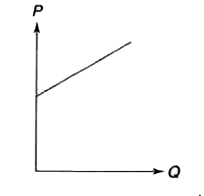Give the equations of motion of a particle undergoing retardation along a straigth line.
Video Solution
|
Answer
Step by step video & image solution for Give the equations of motion of a particle undergoing retardation along a straigth line. by Physics experts to help you in doubts & scoring excellent marks in Class 8 exams.
Updated on:21/07/2023Topper's Solved these Questions
- KINEMATICSBOOK - PEARSON IIT JEE FOUNDATIONCHAPTER - KINEMATICSEXERCISE - VERY SHORT ANSWER TYPE QUESTIONS
15 Videos
- KINEMATICSBOOK - PEARSON IIT JEE FOUNDATIONCHAPTER - KINEMATICSEXERCISE - ESSAY TYPE QUESTIONS
3 Videos
- KINEMATICSBOOK - PEARSON IIT JEE FOUNDATIONCHAPTER - KINEMATICSEXERCISE - LEVEL 3
18 Videos
- CHEMICAL EFFECTS OF ELECTRIC CURRENTBOOK - PEARSON IIT JEE FOUNDATIONCHAPTER - CHEMICAL EFFECTS OF ELECTRIC CURRENTEXERCISE - COMPETITION CORNER (MCQ)
48 Videos
Similar Questions
Knowledge Check
The equation of motion of a particle moving along a straight line is s=2t3−9t2+12t, where the units of s and t are centrimetre and second. The acceleration of the particle will be zero after
A32sB23sC12sD1sA particle is moving along a straight line.
AIf the acceleration of the particle is more than that of another object, the particle is moving faster.BIf the acceleration is positive, the speed must be increasing.CIf the acceleration and the velocity have the same sign, the speed must be increasing.DIf the acceleration is zero, the velocity is constant but the speed may be changing.The motion of a particle in straight line is an example of
Aconstant velocity motionBuniformly acceleration motionCnon-uniformly acceleration motionDzero velocity motion
The equation of motion of a particle is x=acos(αt)2. The motion is
View SolutionThe equation fo motion of a particle is
x=acos(αt)2. The motion is
View SolutionThe equation of motion of a particle is x=acos(αt)2 .The motion is
View SolutionWhich of the graph shows a particle with retardation?
View SolutionIdentify the correct graph represeriting the motion of a particle along a straight line With constant acceleration with zero initial velocity.
View Solution

